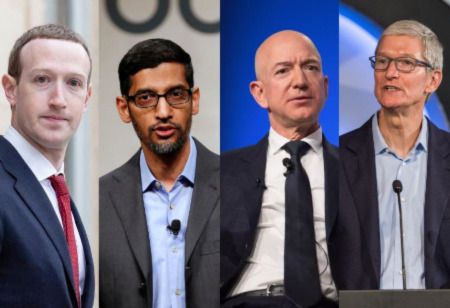
Why it's Important to Address AI Challenges before Products Reach Consumers


After the release of the well-liked ChatGPT AI chatbot, which sparked a race among tech giants to release similar tools while raising ethical and societal concerns about technology that can produce convincing text or artwork that appears to be the work of humans, artificial intelligence shot to the top of the national and international conversation in recent months.
This week, top administration officials including Vice President Kamala Harris will meet with the chief executives of Alphabet Inc.'s Google, Microsoft, OpenAI, and Anthropic to discuss important artificial intelligence (AI) challenges. White House Office of Science and Technology Policy and White House Domestic Policy Council representatives discussed how the technology can present a significant risk to workers at the start of this week. Privacy concerns, bias, and worries that it can spread frauds and false information are among the issues raised by the rapidly developing AI technology.
Last month, the US President Joe Biden said that it is too soon to deem whether AI is dangerous, but he stressed that tech companies had a duty to make sure their products were secure. He claimed that social media had already demonstrated the damage that powerful technology can cause when the proper controls aren't in place. AI, according to Biden, could aid in combating disease and climate change, but it's also crucial to consider potential hazards to society, the economy, and national security.
Biden's caution highlights a new development, according to industry experts: the rise of simple AI tools that may produce manipulative content and realistic-looking synthetic media known as deepfakes. While online companies should always be accountable for the safety of their products, Biden's reminder represents something new.
While they are at it, the administration has asked for feedback from the public on suggested accountability measures for AI systems as concerns about its effects on national security and education mount.
As a matter of fact, Italy temporarily blocked ChatGPT on privacy concerns, and EU legislators are negotiating the adoption of new regulations to restrict high-risk AI products across the 27-nation bloc.
On the other hand, looking at the current AI Bill of Rights, it was noted that its Blueprint was meant to serve as a call to action for the US government to protect civil and digital rights in an AI-driven society rather than outlining particular enforcement measures. Therefore, it's important to comprehend what the new regulations cover, what they do not cover, and what other work is being done to ensure AI accountability.
Need of AI Bill of Rights
Over the past eight years, solving problems relating to the Responsible Use of Artificial Intelligence (AI) has gained importance for nations, citizens, and businesses. About 60 nations currently have national AI strategies, and many have policies that allow for responsible use of a technology that can be incredibly beneficial but, in the absence of adequate governance, can cause significant harm to people and our society.
The blueprint's goal is to help guide the design, use, and deployment of automated systems to protect the American Public. The guiding principles are non-regulatory and non-binding; they are a Blueprint, as marketed, rather than a fully-fledged Bill of Rights with legal safeguards.
The document also makes it clear that many industrial and/or operational applications of AI should not be included as they do not have the potential to meaningfully affect the American public's rights, opportunities, or access to essential resources or services.
Mixed Opinion from Industry Experts
Press, companies, and academia responded differently to the Blueprint's unveiling. Some proponents of governmental restraints think it falls short and won't have much of an impact. These people wished the text had more of the safeguards provided by the EU AI Act.
On the other side, there is a lot of support for delaying regulation in order to promote competitive innovation and success in the many applications of AI. The significant safeguards that this document may provide for a number of groups, particularly Black and Latino Americans, have also been emphasized by policy experts.
Other Work in Place
Despite the Blueprint's lack of legal force, the White House also disclosed that several federal departments and agencies would be implementing related actions and guidelines regarding the use of AI systems, including new procurement policies.
The level of maturity of agency engagement on the Blueprint varies greatly, and it is unclear how new guidelines will relate to or complement current AI policies.
But the Bill Does Exercise Prior Statements that Existing Standards and Laws Apply to
The Algorithmic Accountability Act, which was reintroduced in the Senate earlier in 2022 in an amended form, is one of the other proposed legal mechanisms that can be seen as adding to the normative enforcement of certain aspects.
The Blueprint for an AI Bill of Rights can be seen as enhancing prior statements that existing standards and laws apply. These legal safeguards would strengthen the AI Bill of Rights and, conceivably, bring the upcoming AI Act of the EU and the US closer together in terms of regulatory best practices.
The AI Bill of Rights is a wonderful project that needs to be properly positioned in the context of other upcoming initiatives, both within the US and overseas, when evaluating the larger picture of international procedures and forms of best practice in the governance of AI.
Need of the Hour
China and the EU are moving quickly to create and implement real regulatory frameworks that will impact international best practices. It is crucial that policymakers work harder to put new policies and practices into place that will protect the interests of US citizens as well as advantageous innovation in the future if the US is to maintain its influence over international de jure standards in the field of AI. These advances will undoubtedly have repercussions on the nascent but emerging worldwide best practices in AI governance.

